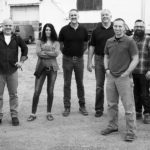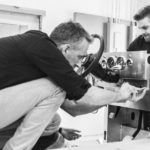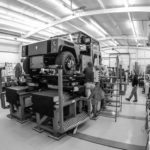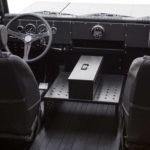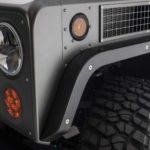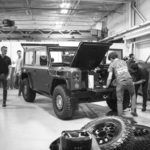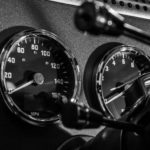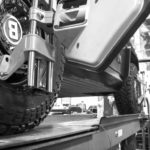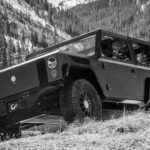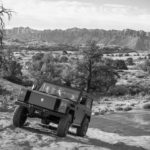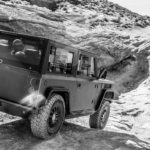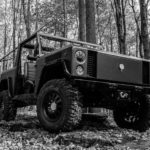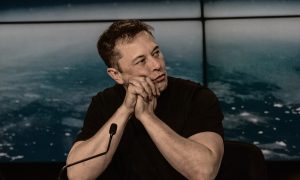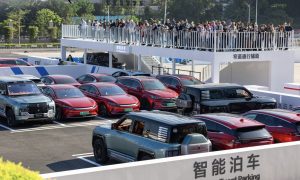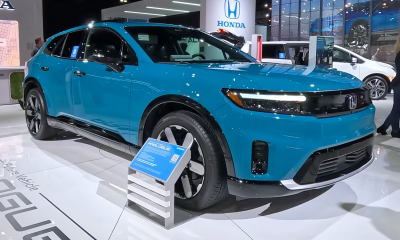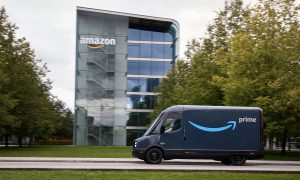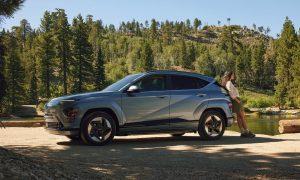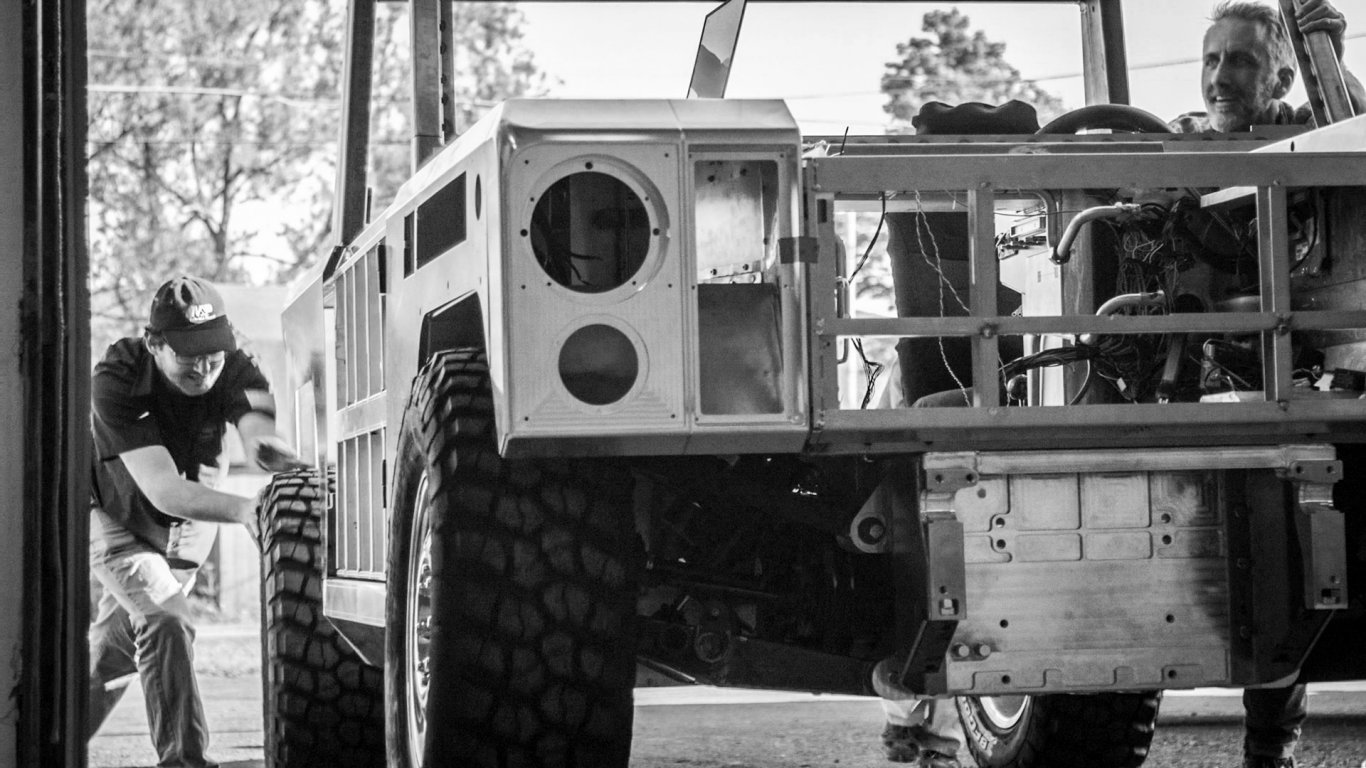

Lifestyle
From Tesla shareholder to startup CEO: How Robert Bollinger is bringing utility to the EV market
On a rather chilly morning a few days before Christmas, Bollinger Motors CEO Robert Bollinger indulged my request for a short interview about his longtime support for electric vehicles. Speaking through FaceTime, Robert animatedly talked about Bollinger Motors’ highly anticipated Sports Utility Truck, his thoughts about other EV makers targeting the trucking segment, and even his experiences as a Tesla shareholder.
Robert Bollinger graduated from Carnegie Mellon University with a degree in Industrial Design. After working for a series of ad agencies, he started a 15-year stint at John Masters Organics, where he served as COO and CMO. Later on, Robert co-started a grass-fed cattle farm, and while working in the fields, he saw the need for a better truck — one that is not being made by the world’s premier carmakers.
Years before he started Bollinger Motors in 2014, Robert Bollinger found himself very impressed by a small startup electric car company from Silicon Valley. Having had a soft spot for EVs for years, his attention was immediately piqued by the release of the original Tesla Roadster and the Model S sedan. That said, his work on the fields meant that a sedan or a sports car did not really fit his needs. Nevertheless, he opted to support Tesla, just in another way.
“When Tesla first came out, when they had the Roadster and Model S, I was hoping to buy one. I didn’t have a car — I had my truck. (The Roadster and the Model S) never quite fit my particular needs, but I bought (TSLA) stock soon after they went public. Over the years, I just kept buying,” he said.
Being a shareholder of Tesla, Robert is all too familiar with the activities of the company’s critics, particularly those of short-sellers. When asked how he handled the stream of negativity consistently being thrown towards Tesla, Robert simply remarked that he “just kept buying.” Against the noise from the company’s most passionate naysayers, “I just kept riding it up,” he said.
- (Photo: Bollinger Motors)
- (Photo: Bollinger Motors)
- (Photo: Bollinger Motors)
Robert Bollinger and his team with their first vehicle, the B1 Sports Utility Truck. (Photo: Bollinger Motors)
With Tesla disrupting the automotive industry, Robert decided in 2014 to start his electric vehicle startup. Operating under the name Bollinger Motors, the startup opted to create a vehicle that is designed and built around utility. It would be, in a lot of ways, the truck that Robert always wanted when working in the fields. It would be tough, it would operate in rough terrain, and most of all, it would be all-electric.
“I always believed in electric. If you want to start a startup now, it has to be electric.”
The result of Robert and his small team’s work is the Bollinger B1, a vehicle the company dubs as a “Sport Utility Truck.” The B1 is arguably the most utility-focused EV that has been unveiled so far, with its Land Rover Defender-esque panels, its 33-inch tires, and its 15-inch ground clearance. The interior of the B1 echoes the design of classic utility vehicles too, with analog gauges dominating the dashboard. The company is also planning the B2, a pickup truck it intends to unveil in the near future. Overall, Robert notes that the B1 and B2 are created to push the envelope on utility vehicles, particularly as SUVs and trucks nowadays are mostly focusing on factors such as luxury and comfort.
“Compared to sedans, SUVs and pickup trucks, they haven’t really evolved that much. They get more luxurious, but they never get drastically more capable. For example, their ground clearance generally has not improved. It’s not really until you go drastic such as going electric that you see how much you can do,” Robert said.
While the B1 has attracted a notable amount of interest since it was unveiled earlier this year (there are now around 28,000 reservations for the vehicle), other electric car companies are breaching the pickup truck market as well. Fellow EV startup Rivian, for one, recently unveiled the R1T pickup truck and the R1S SUV, and Elon Musk has mentioned on Twitter that he is “dying to make” Tesla’s pickup truck. Musk even noted that a prototype of the upcoming vehicle might be unveiled as early as next year.
- (Photo: Bollinger Motors)
- (Photo: Bollinger Motors)
- (Photo: Bollinger Motors)
The Bollinger B1 is designed from the ground up as a utility vehicle. (Photo: Bollinger Motors)
Despite the emergence of pickup trucks and SUVs from larger, more established competitors, the Bollinger Motors CEO stated that he believes the market will be large enough for everyone. Even with legacy carmakers shifting their trucks to hybrids or all-electric vehicles, Robert believes that there will be consumers whose needs would be fulfilled perfectly by the B1 and the B2. In this light, the EV enthusiast notes that he welcomes the arrival of more electric and electrified trucks.
“At some point, there will be electric jeeps. There will be electric trucks from many carmakers. When we’re creating our own version of the vehicle, we have our own DNA; we have our own setup and specs. A lot of the legacy companies, when they finally come towards electric, they’re gonna have EV versions of what they have now. The first hybrid F-150 will have the existing architecture.
“Rivian’s extremely different than us. It’s more mainstream, more luxury — and that’s great. That’s their market, but it’s not ours. I’m sure when Tesla comes out with their pickup truck, it’ll be great. But we’re still going to be different. I’m just happy that there are more electric cars. I applaud them for doing a great job, and I believe that we can co-exist very nicely.”
One of these differences is in the way Bollinger is going about the manufacturing of the B1 and the B2. Tesla, for one, is developing and creating much of their vehicles’ components in-house. This, according to Robert, is strategic for Tesla considering the company’s size. For a much smaller startup like Bollinger, though, Robert noted that another approach was needed.
“Tesla and everybody else is going about things differently than we are. They raised hundreds of millions of dollars to acquire what they need. Whereas, we are more coming from the angle of hand-built, small team, low overhead. We’re growing from the handcrafted side of things if you will. We’re growing more organically, growing as we need to grow. We’re at a small space for prototyping right now because that’s what we need,” he said.
- (Photo: Bollinger Motors)
- (Photo: Bollinger Motors)
The Bollinger B1 echoes the design elements of classic off-road vehicles like the Land Rover Defender. (Photo: Bollinger Motors)
So far, Bollinger has moved to a larger headquarters in Detroit. Robert notes that this was a strategic decision since it allows the company to be close to vendors and a healthy talent pool. The B1 is also being refined as the company prepares to start producing the vehicle. When asked if he thinks Bollinger will experience its version of “production hell” once it begins manufacturing the B1, Robert candidly remarked that he is saving all the hell for 2019, when things will likely go really crazy.
With his background as a longtime EV supporter and TSLA shareholder, I asked Robert if he opted to use any of Tesla’s open-sourced patents when Bollinger Motors was developing the B1. The CEO notes that they didn’t find a need to tap into Tesla’s patents since Bollinger is not making its own electric motors or batteries. Due to the company’s size, Robert notes that he and his team are not trying to reinvent all the components of electric vehicles. Instead, it is more preferable for the company to rely on partnerships with vendors instead, particularly as there’s less overhead.
That said, the Bollinger B1 and Bollinger B2 do have similarities with Tesla’s Model 3 in terms of battery technology. Robert remarked that he and his team talked with about five battery providers to evaluate and test which types of cells would be best for the B1 and B2. After a long list that included pouch cells and prismatic cells from several manufacturers, Robert noted that they ultimately decided to settle on 2170 cells.
“Long list of battery scenarios, the 2170 cell just rose to the top. It just gave the most energy density,” he said.
- (Photo: Bollinger Motors)
- (Photo: Bollinger Motors)
- (Photo: Bollinger Motors)
- (Photo: Bollinger Motors)
The Bollinger B1 in its natural habitat. (Photo: Bollinger Motors)
Just like Tesla’s electric cars, most of the Bollinger B1 and B2’s components are locally produced. Robert admits that there are critical components for his electric vehicles that are made elsewhere, but Bollinger is attempting to get them licensed for production in the United States. Once produced, Bollinger aims to bring its vehicles to customers across the globe. Robert noted that an RHD version of the B1 and B2 could be produced without much complexity too, thanks to the vehicles’ straightforward design.
The Bollinger B1 and B2 are equipped with J1772 and CCS ports. Back in August, and not long after Elon Musk mentioned that Tesla is not restricting other EV makers from accessing its charging infrastructure, Robert posted a tweet to Elon Musk, asking if Bollinger’s vehicles can use the Supercharger Network. The CEO noted that he didn’t really expect a response since he asked through social media, but as the B1 and B2 close in on production, there is a good chance that he might request Elon Musk for Supercharger access once more.
“I only asked them through a tweet, so I didn’t really expect a response. But as we finalize more things, we might come back to that. But we got so many people, Tesla fans, that were rooting for us. I appreciate that,” he said.
Elon Musk
X account with 184 followers inadvertently saves US space program amid Musk-Trump row
Needless to say, the X user has far more than 184 followers today after his level-headed feat.
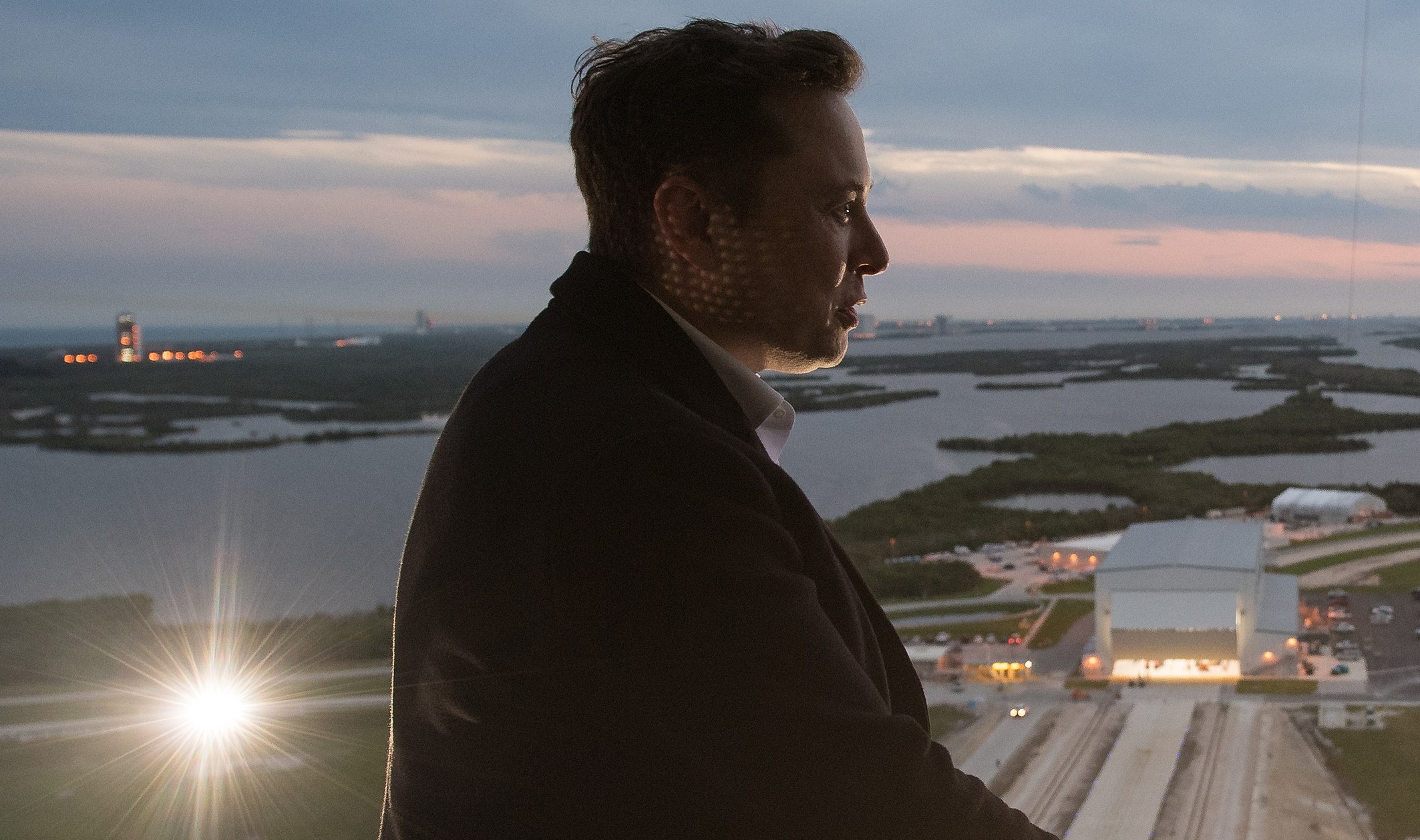
An X user with 184 followers has become the unlikely hero of the United States’ space program by effectively de-escalating a row between SpaceX CEO Elon Musk and President Donald Trump on social media.
Needless to say, the X user has far more than 184 followers today after his level-headed feat.
A Near Fall
During Elon Musk and Donald Trump’s fallout last week, the U.S. President stated in a post on Truth Social that a good way for the United States government to save money would be to terminate subsidies and contracts from the CEO’s companies. Musk responded to Trump’s post by stating that SpaceX will start decommissioning its Dragon spacecraft immediately.
Musk’s comment was received with shock among the space community, partly because the U.S. space program is currently reliant on SpaceX to send supplies and astronauts to the International Space Station (ISS). Without Dragon, the United States will likely have to utilize Russia’s Soyuz for the same services—at a significantly higher price.
X User to the Rescue
It was evident among X users that Musk’s comments about Dragon being decommissioned were posted while emotions were high. It was then no surprise that an X account with 184 followers, @Fab25june, commented on Musk’s post, urging the CEO to rethink his decision. “This is a shame this back and forth. You are both better than this. Cool off and take a step back for a couple days,” the X user wrote in a reply.
Much to the social media platform’s surprise, Musk responded to the user. Even more surprising, the CEO stated that SpaceX would not be decommissioning Dragon after all. “Good advice. Ok, we won’t decommission Dragon,” Musk wrote in a post on X.
Not Planned, But Welcomed
The X user’s comment and Musk’s response were received extremely well by social media users, many of whom noted that @Fab25june’s X comment effectively saved the U.S. space program. In a follow-up comment, the X user, who has over 9,100 followers as of writing, stated that he did not really plan on being a mediator between Musk and Trump.
“Elon Musk replied to me. Somehow, I became the accidental peace broker between two billionaires. I didn’t plan this. I was just being me. Two great minds can do wonders. Sometimes, all it takes is a breather. Grateful for every like, DM, and new follow. Life’s weird. The internet’s weirder. Let’s ride. (Manifesting peace… and maybe a Model Y.)” the X user wrote.
Lifestyle
Tesla Cybertruck takes a bump from epic failing Dodge Charger
The Cybertruck seemed unharmed by the charging Charger.
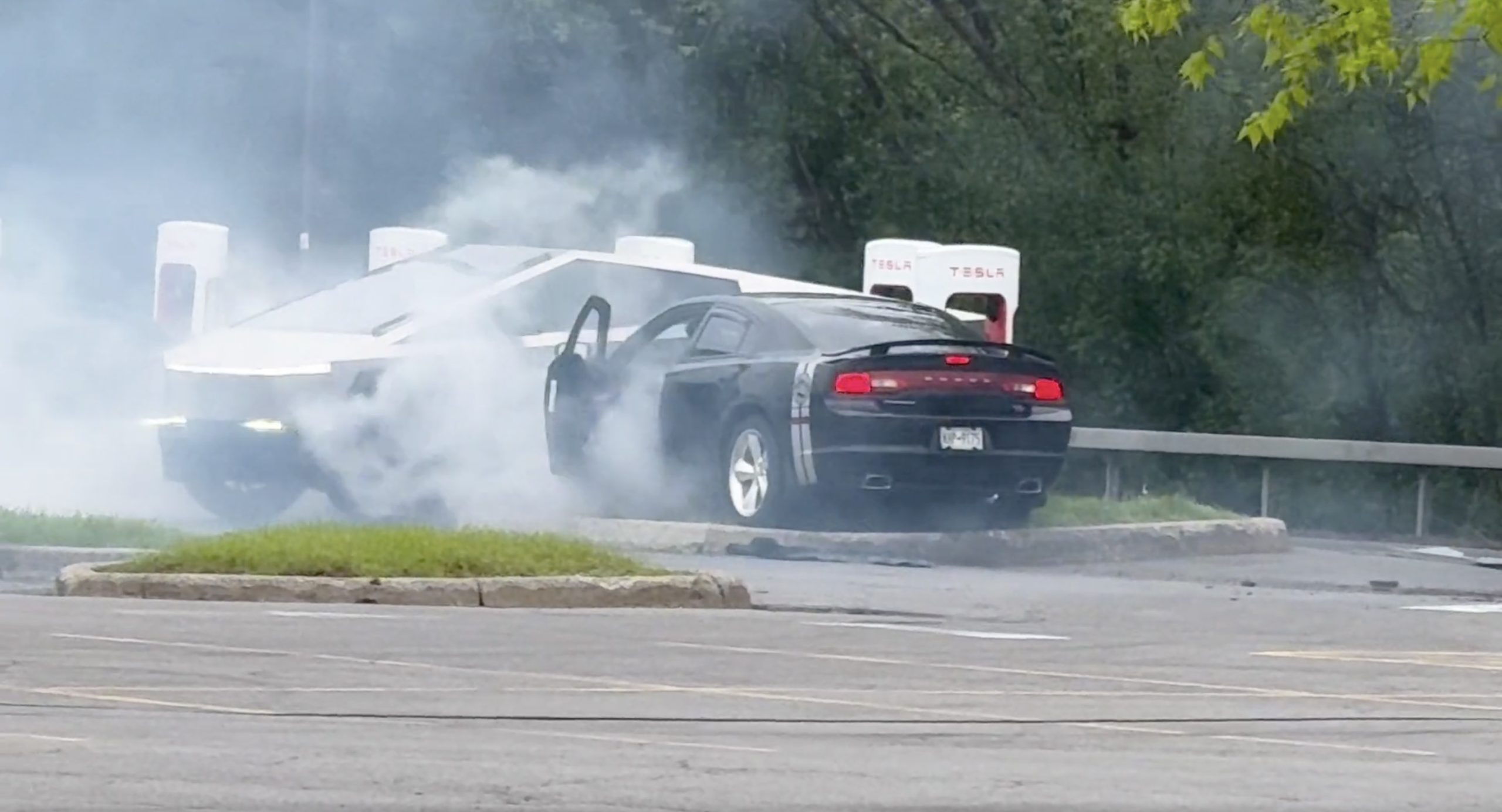
There comes a time in a driver’s life when one is faced with one’s limitations. For the driver of a Dodge Charger, this time came when he lost control and crashed into a Tesla Cybertruck–an absolute epic fail.
A video of the rather unfortunate incident was shared on the r/TeslaLounge subreddit.
Charging Charger Fails
As could be seen in the video, which was posted on the subreddit by Model Y owner u/Hammer_of_something, a group of teens in a Dodge Charger decided to do some burnouts at a Tesla Supercharger. Unfortunately, the driver of the Charger failed in his burnout or donut attempt, resulting in the mopar sedan going over a curb and bumping a charging Cybertruck.
Ironically, the Dodge Charger seemed to have been parked at a Supercharger stall before its driver decided to perform the failed stunt. This suggests that the vehicle was likely ICE-ing a charging stall before it had its epic fail moment. Amusingly enough, the subreddit member noted that the Cybertruck did not seem like it took any damage at all despite its bump. The Charger, however, seemed like it ran into some trouble after crashing into the truck.
Alleged Aftermath
As per the the r/TeslaLounge subreddit member, the Cybertruck owner came rushing out to his vehicle after the Dodge Charger crashed into it. The Model Y owner then sent over the full video of the incident, which clearly showed the Charger attempting a burnout, failing, and bumping into the Cybertruck. The Cybertruck owner likely appreciated the video, in part because it showed the driver of the Dodge Charger absolutely freaking out after the incident.
The Cybertruck is not an impregnable vehicle, but it can take bumps pretty well thanks to its thick stainless steel body. Based on this video, it appears that the Cybertruck can even take bumps from a charging Charger, all while chilling and charging at a Supercharger. As for the teens in the Dodge, they likely had to provide a long explanation to authorities after the incident, since the cops were called to the location.
Lifestyle
Anti-Elon Musk group crushes Tesla Model 3 with Sherman tank–with unexpected results
Ironically enough, the group’s video ended up highlighting something very positive for Tesla.
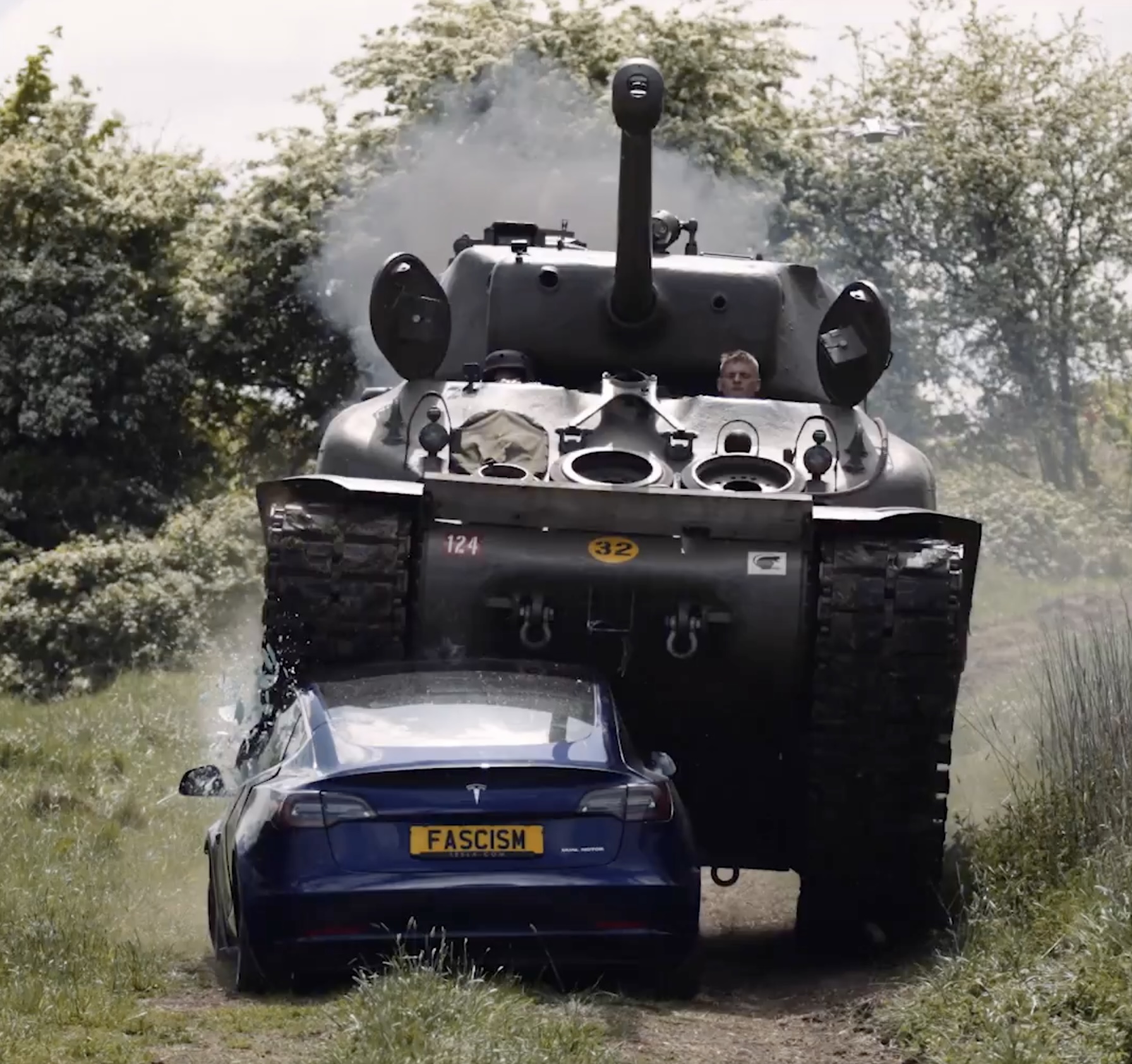
Anti-Elon Musk protesters and critics tend to show their disdain for the CEO in various ways, but a recent video from political action group Led By Donkeys definitely takes the cake when it comes to creativity.
Ironially enough, the group’s video also ended up highlighting something very positive for Tesla.
Tank vs. Tesla
In its video, Led By Donkeys featured Ken Turner, a 98-year-old veteran who served in the British army during World War II. The veteran stated that Elon Musk, the richest man in the world, is “using his immense power to support the far-right in Europe, and his money comes from Tesla cars.”
He also noted that he had a message for the Tesla CEO: “We’ve crushed fascism before and we’ll crush it again.” To emphasize his point, the veteran proceeded to drive a Sherman tank over a blue Tesla Model 3 sedan, which, of course, had a plate that read “Fascism.”
The heavy tank crushed the Model 3’s glass roof and windows, much to the delight of Led By Donkeys’ commenters on its official YouTube channel. But at the end of it all, the aftermath of the anti-Elon Musk demonstration ended up showcasing something positive for the electric vehicle maker.
Tesla Model 3 Tanks the Tank?
As could be seen from the wreckage of the Tesla Model 3 after its Sherman encounter, only the glass roof and windows of the all-electric sedan were crushed. Looking at the wreckage of the Model 3, it seemed like its doors could still be opened, and everything on its lower section looked intact.
Considering that a standard M4 Sherman weighs about 66,800 to 84,000 pounds, the Model 3 actually weathered the tank’s assault really well. Granted, the vehicle’s suspension height before the political action group’s demonstration suggests that the Model 3’s high voltage battery had been removed beforehand. But even if it hadn’t been taken off, it seemed like the vehicle’s battery would have survived the heavy ordeal without much incident.
This was highlighted in comments from users on social media platform X, many of whom noted that a person in the Model 3 could very well have survived the ordeal with the Sherman. And that, ultimately, just speaks to the safety of Tesla’s vehicles. There is a reason why Teslas consistently rank among the safest cars on the road, after all.
-

 Elon Musk1 week ago
Elon Musk1 week agoTesla investors will be shocked by Jim Cramer’s latest assessment
-

 Elon Musk18 hours ago
Elon Musk18 hours agoxAI launches Grok 4 with new $300/month SuperGrok Heavy subscription
-

 Elon Musk3 days ago
Elon Musk3 days agoElon Musk confirms Grok 4 launch on July 9 with livestream event
-

 News7 days ago
News7 days agoTesla Model 3 ranks as the safest new car in Europe for 2025, per Euro NCAP tests
-

 Elon Musk2 weeks ago
Elon Musk2 weeks agoA Tesla just delivered itself to a customer autonomously, Elon Musk confirms
-

 Elon Musk1 week ago
Elon Musk1 week agoxAI’s Memphis data center receives air permit despite community criticism
-

 Elon Musk2 weeks ago
Elon Musk2 weeks agoTesla’s Omead Afshar, known as Elon Musk’s right-hand man, leaves company: reports
-

 News2 weeks ago
News2 weeks agoXiaomi CEO congratulates Tesla on first FSD delivery: “We have to continue learning!”

